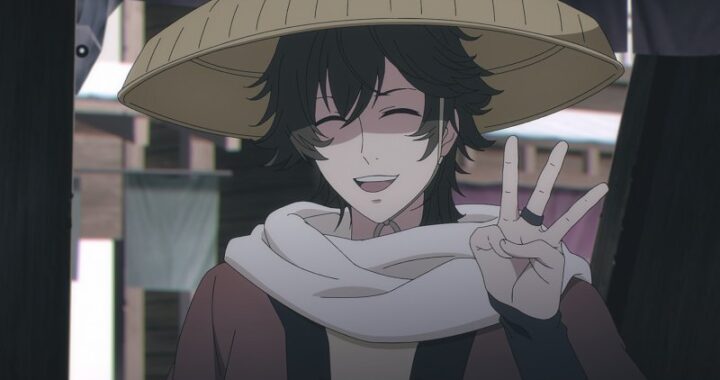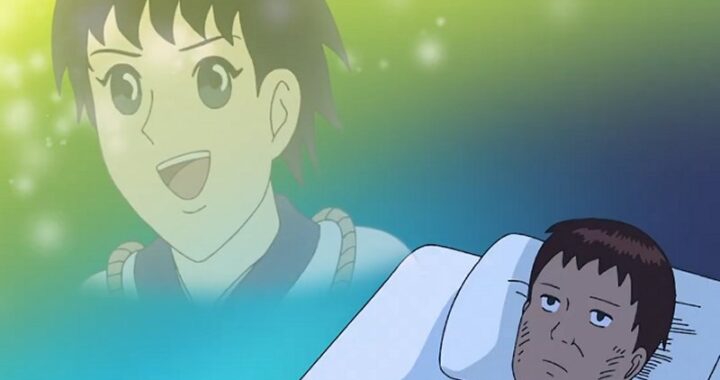 A few months ago, I wrote a ten-year retrospective on Mushishi Zoku Shou, the even-more-excellent sequel to the already beloved original Mushishi anime that was itself nearly a decade old by the time its successor came around. In my mountains of praise, I inevitably kept bringing up the same name, even more often than the original creator: Hiroshi Nagahama, the brilliant director and writer that made every installment of Mushishi as incredible as it was.
A few months ago, I wrote a ten-year retrospective on Mushishi Zoku Shou, the even-more-excellent sequel to the already beloved original Mushishi anime that was itself nearly a decade old by the time its successor came around. In my mountains of praise, I inevitably kept bringing up the same name, even more often than the original creator: Hiroshi Nagahama, the brilliant director and writer that made every installment of Mushishi as incredible as it was.
Anyone who has seen Nagahama at a convention has an even greater appreciation for him, from his autograph sessions-turned-personal live drawings to his utterly fascinating panels lovingly recounting the early history of his career before being cut tragically short just as he gets to the best part. At Otakon 2024, we were fortunate enough to be blessed with his presence once more, and I was even more fortunate to additionally get to sit down with the legend for a 15-minute interview, adding yet another dimension to my respect for him as a passionate artist and the nicest guy you’ll meet.
You seem to be extremely uncompromising in your vision for the series you direct, which are often unconventional in their presentation. What challenges have you faced in keeping your work authentic in an industry that’s so demanding of deadlines, budget constraints, and predictable hits?
Nagahama: First, I decide what visual effect I’m going for and present it to the production committee. Like for Flowers of Evil, I knew when I looked at the visuals that I wanted to present it rotoscoped, which is totally different from regular anime, of course. It’s two to three times the cost and time. But I made a presentation to the committee and got the okay for the production method, so even if it takes more time and money, they’ve committed to it already. So since it’s all on the table in the beginning, if they say, “Oh no, we can’t afford that kind of time or money,” then I would have to change the direction of the visuals. When I’m working on anime, I think it’s not about giving 100% or 120%, but about the best way to present that particular manga or work. Even if it’s a still image – maybe it stretches or the mouth doesn’t move when people are talking – it still has to give life to the original. So even if people say “That’s not anime,” that’s not the way that I think.
Much about the anime industry changed from when the first season of Mushishi aired in 2005 to when its sequels aired in 2014, but you managed to keep it remarkably consistent throughout its run. What efforts did you make to ensure that we got the same timeless, enduring execution of Mushishi from beginning to end?
Nagahama: Well the absolute requirement was that the cast and the main staff returned. But it had been nine years and so much had changed with technology. So the first thing that we discussed was, “Do we go back to the look of nine years ago or not?” We did choose to recreate the look, but all the technology and our experience had advanced by nine years. So we wanted to go back in time while keeping all the good parts of the progress we made, like Wolverine in X-Men: Days of Future Past.
I just watched that movie a couple of weeks ago!
Nagahama: (English) Really? I love that movie! (Japanese) It was a great movie.
Nearly everything you’ve worked on feels completely different from what you made before it. Do you intentionally seek out subject matter and adaptation methods you’ve never worked on before when you decide on a new project to direct?
Nagahama: It’s not exactly intentional. For every work, I choose the direction it’s going to take. You know the Teenage Mutant Ninja Turtles? Raphael has sai, right? Then the weapons he can fight with are sai. Michaelangelo has nunchucks. The weapons he can fight with are nunchucks. Leonardo has a blade. The weapon he can fight with is a sword. Donatello has a stick. Because he has a stick, that’s the weapon he can use to fight. I just changed weapons for each job. “Ah, this time it’s Raphael, so I’ll fight with this stick that has a little longer reach,” or “I’ll fight with a spear,” or something like that. I just changed weapons depending on who I was fighting. (laughs) Wakaru?
(laughs) Wakarimasu.
On that note, are there any particular genres or themes you’d like to direct in the future?
Nagahama: I would like to do anything that I haven’t tried before. If anything, I would like to properly animate American comics. There’s a character called Mister Miracle. I would like to animate him someday. It’s a fascinating character.
After five years, your adaptation of Uzumaki finally has a release date. What can you tell us about the unique challenges of that production that caused it to take 5+ years of work to create four episodes?
Nagahama: In one word, COVID. It involved a particular production process that was greatly affected by COVID, in a way that was incomparable to other anime. It could’ve been simple if it was a regular anime. It was like the mastermind villain, like Thanos. It destroyed everything. (Nagahama and I both snap our fingers)
When you say that a regular anime wouldn’t have been as affected, what do you mean by that?
Nagahama: Sorry, it’s a secret right now. You’ll see once you see the proper animation. Once you see it, you’ll say “Oh, that’s why you can’t do it during COVID!”
Uzumaki will finally premiere on September 28. I look forward to discovering how much Nagahama innovated in these past 5+ years. I encourage everyone to seek out his past works, especially the Mushishi series. Thank you so much to Nagahama-san for everything you’ve done, and to Otakon and our translator for facilitating this interview. I can’t wait to see you at another convention!




